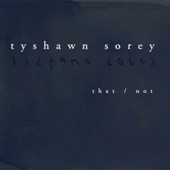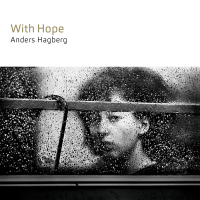Home » Jazz Articles » Profile » Ralph Burns's "Summer Sequence": An Appreciation
Ralph Burns's "Summer Sequence": An Appreciation
'Summer Sequence' is, I think, a sublime example of Burns's gifts as an arranger/composer, a tribute to the influence of Duke Ellington and Billy Strayhorn.
 It's no secret that the much heralded (and sometimes over romanticized) Big Band Era produced more than a few notable players and ensemble leaders. But it is also clear that for every, say, Duke Ellington and Claude Thornhill, these bands were also driven by the hard (and often undersung) work of arrangers, the best of whom understood the possibilities inherent in their respective ensembles as well as the leaders who hired them.
It's no secret that the much heralded (and sometimes over romanticized) Big Band Era produced more than a few notable players and ensemble leaders. But it is also clear that for every, say, Duke Ellington and Claude Thornhill, these bands were also driven by the hard (and often undersung) work of arrangers, the best of whom understood the possibilities inherent in their respective ensembles as well as the leaders who hired them.This written celebration of arranger-composer Ralph Burns's extended work "Summer Sequence" was originally presented at a colloquium held at the Smithsonian Institution's Museum of American History in early 2007.
But it can also be viewed as a heartfelt nod to the still arresting marriage of harmonic and melodic complexity (what Woody Herman dubbed "higher class" music, and along with Burns's "Sequence", also included titles such as "Ebony Concerto", which Igot Stravinsky composed for the Orchestra) unfettered swing, and accessibility bands such as Herman's offered the ears of listeners.
The Newton, Massachusetts born Burns, who joined the Herman Organization in 1944 (along with equally influential bandmembers such as co-arranger Neal Hefti, trombonist Bill Harris, saxophonist Flip Phillips and drummer Dave Tough, among others)-often utilized sports-related metaphors to describe this incarnation of the Orchestra.
In the liner notes for the two CD set Blowin' Up A Storm - The Columbia Years: 1945-1947, Burns, who died in 2001 after an equally successful career as a composer and arranger for Broadway musicals and film, referred to the band as being comparable to one of the great athletic teams:
"It had heavy strength. We had some top flight players, and when everything was going right—when the rhythm section really got going, it was like playing for the Yankees. It was incredible to be sitting in."
But the post-war Herman Orchestra should also be commended for what today's rappers call "mad skillz", and for Herman's willingness to also dive into the controversial musical waters eventually dubbed Bebop, as the infectious Jimmy Guiffre-arranged "Four Brothers", recorded in 1947, delightfully illustrates.
"Summer Sequence" is, I think, a sublime example of Burns's gifts as an arranger/composer, a tribute to the influence of Duke Ellington and Billy Strayhorn. In a profile published in Metronome magazine, Burns noted that in addition to his love for Igor Stravinsky, he also loved "Duke, of course. Billy Strayhorn, of course. And I also love Eddie Sauter and Johnny Thompson tremendously."
Burns described the period in which "Sequence" was composed thusly: "During July of 1946, Woody took some time off and we disbanded. I rented a room at Chubby (Jackson's) mother's house-she was the best Jewish cook on Long Island! Chubby and I got lost out there for the whole summer; just Jones Beach, good food and good dope (grass only). I wrote "Summer Sequence" during our hiatus."
In the program notes for the March 31, 1946 Symphony Hall Concert in which "higher class" titles such as "Sequence" and "Ebony Concerto" were performed by the Orchestra, Burns tersely described the composition's three movements as "slow and peaceful", "fast and furious" and "just happy".
Burns's description doesn't do justice to his work, or the Herman Orchestra's recording of same.
 Like the best work of Ellington and Strayhorn, the title's alternately pensive and rollicking moods are movingly interpreted by the likes of guitarist Chuck Wayne, trombonist Bill Harris, and Woody Herman's creamy, dramatic, Johnny Hodges-influenced work on alto saxophone. The orchestra is Burns's palette, and his compositional brush is on fire.
Like the best work of Ellington and Strayhorn, the title's alternately pensive and rollicking moods are movingly interpreted by the likes of guitarist Chuck Wayne, trombonist Bill Harris, and Woody Herman's creamy, dramatic, Johnny Hodges-influenced work on alto saxophone. The orchestra is Burns's palette, and his compositional brush is on fire.Not surprisingly, (or surprisingly, depending on your view of critics!) the critics agreed.
Journalist Michael Levin covered the premiere of "Sequence" at Carnegie Hall. (one week before the Symphony Hall concert) Levin noted that the "Largest hand of the evening went to the 23-year old Burns, sitting at the piano for the first performance of his three part work." Levin "got a tremendous boot from his "Summer Sequence", especially the wonderful quasi-Mozartian sound of the piano, bass and guitar part of the third section."
In a review of the 1949 recording of "Sequence" (in which Burns added a fourth movement featuring Stan Getz), Melody Maker's Edgar Jackson praised the work, which he called "haunting", "rhapsodic" and " the greatest contribution to come from concert jazz."
As previously noted, Burns's ambition didn't die with the demise of The Big Band Era. He contributed to the scores of some of Broadway's biggest hits (Chicago, No, No Nanette, and Sweet Charity), and he won Academy Awards for Cabaret and All That Jazz.
Still, "Summer Sequence" is considered by many to be Burns's compositional masterpiece, and remains a landmark achievement in a sometimes over sentimentalized, frequently undervalued chapter in 20th Century American music.
Tags
PREVIOUS / NEXT
Support All About Jazz
 All About Jazz has been a pillar of jazz since 1995, championing it as an art form and, more importantly, supporting the musicians who make it. Our enduring commitment has made "AAJ" one of the most culturally important websites of its kind, read by hundreds of thousands of fans, musicians and industry figures every month.
All About Jazz has been a pillar of jazz since 1995, championing it as an art form and, more importantly, supporting the musicians who make it. Our enduring commitment has made "AAJ" one of the most culturally important websites of its kind, read by hundreds of thousands of fans, musicians and industry figures every month.























